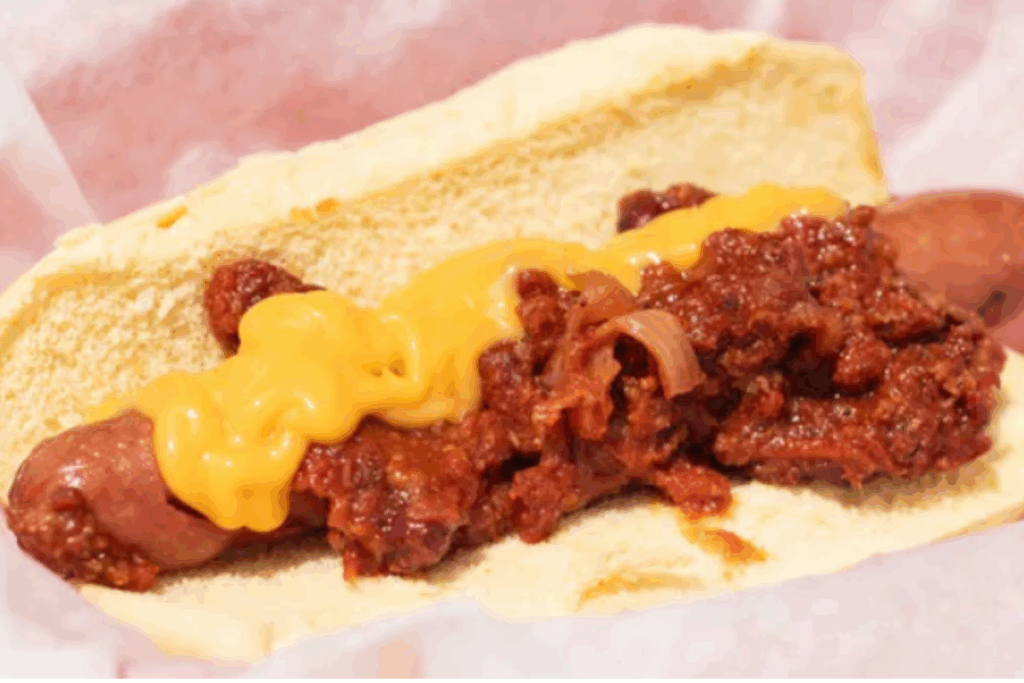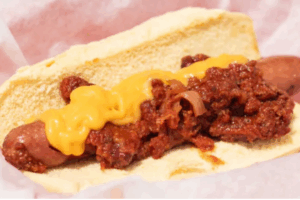Unlocking the Best Deals and Untold Stories of National Hot Dog Day

Unlocking the Best Deals and Untold Stories of National Hot Dog Day: Every year, on the third Wednesday of July, America pauses to celebrate one of its most iconic, democratic, and delicious foods. It’s a day of sizzling grills, bustling street carts, and unbeatable deals. It’s National Hot Dog Day, a tribute to the simple yet perfect combination of a sausage in a bun that has captured the nation’s heart and stomach.
But the hot dog is so much more than just fast food. It’s a symbol of summer afternoons at the ballpark, of backyard barbecues with family and friends, and of quick, satisfying lunches on a busy day. It’s a culinary canvas that reflects the diverse tastes of a nation, with every region adding its own unique twist. This guide is your ultimate companion to celebrating National Hot Dog Day 2025. We’ll not only point you toward the expected deals and freebies but also take you on a journey through the fascinating history and rich culture of this beloved American staple.
The Deals of the Day: Celebrating with Free and Cheap Dogs
National Hot Dog Day is famous for the incredible offers from restaurants and chains across the country. While the official announcements for 2025 will roll out closer to the date, we can look at the traditions of past years to predict the kind of mouth-watering deals you can expect. Get ready to mark your calendars!
- 7-Eleven: This convenience store giant is a major player on National Hot Dog Day. They are famous for their quarter-pound Big Bite hot dogs and typically offer them for a special price, often just $1. It’s a classic deal that draws in millions of fans every year. Keep an eye on the 7Rewards and Speedy Rewards apps for the official coupon.
- Wienerschnitzel: As the world’s largest hot dog chain, Wienerschnitzel goes all out. In previous years, they have offered guests several free Chili Dogs with any purchase. Their classic combination of a grilled hot dog, steamed bun, and a ladle of their secret-recipe chili is a must-try for any celebrant.
- Nathan’s Famous: The name synonymous with hot dogs, especially on Coney Island, Nathan’s Famous usually participates with a nod to its long history. They have been known to offer hot dogs for 5 cents—the original 1916 price—for a limited time during the day. This deal is incredibly popular and often has lines forming early.
- Sonic Drive-In: Known for its drive-in service and extensive menu, Sonic often features its footlong chili cheese coneys or classic hot dogs at a discounted price for the day. It’s the perfect excuse to roll up, place your order, and enjoy a classic American meal in your car.
- Love’s Travel Stops: For those on the road, Love’s is a reliable spot for a good deal. They typically offer a free hot dog or other roller grill items to customers through their Love’s Connect app.
- Dog Haus: This craft-casual chain, known for its gourmet hot dogs, sausages, and burgers, usually has a special offer for app users, such as a buy-one-get-one-free deal on their signature Haus Dogs.
- Philly Pretzel Factory: An unexpected but welcome participant, Philly Pretzel Factory has been known to give away a free pretzel dog to customers. This unique creation wraps a hot dog in their famous soft pretzel dough.
These are just a few of the many businesses that get into the festive spirit. Local diners, small hot dog stands, and even grocery stores will likely have their own specials. The best advice is to keep your eyes peeled and your stomach ready as National Hot Dog Day approaches.
The History of a Culinary Icon: The Hot Dog
How did this simple sausage in a bun become an American legend? The story of the hot dog is a tale of German immigrants, clever entrepreneurs, and the perfect food for a nation on the move.
The direct ancestor of the hot dog is the sausage, a food with a history stretching back millennia. But the specific sausages that gave birth to the hot dog came from Germany. The city of Frankfurt-am-Main claims to be the originator of the “frankfurter,” a pork sausage, as far back as the 15th century. Vienna (Wien in German), on the other hand, lays claim to the “wiener,” a sausage made of both pork and beef. This friendly rivalry over who invented the “dachshund” or “little-dog” sausage was brought to America by German immigrants.
It was in the United States that the final, crucial step was taken: putting the hot sausage in a bun. The exact moment this happened is shrouded in myth and competing claims, but most stories place its birth in the late 19th century. One popular legend attributes it to a German immigrant selling hot dachshund sausages from a food cart in New York City. The story goes that he provided white gloves to his customers to hold the hot sausages, but they kept disappearing. His solution, supposedly suggested by his baker brother-in-law, was to serve the sausages in a soft roll instead.
Also Read Andrea Gibson: The Poet Who Taught Us How to Feel, Gone Too Soon
However, the most credible claim for popularizing the hot dog on a large scale belongs to Charles Feltman, a German baker. In 1867, he began pushing a custom-made food cart around the beaches of Coney Island, selling hot sausages in a milk roll. His business boomed, and he eventually opened Feltman’s German Gardens, a massive restaurant complex that sold millions of hot dogs.
It was one of Feltman’s employees, a Polish immigrant named Nathan Handwerker, who would turn the hot dog into a global phenomenon. In 1916, Handwerker left Feltman’s to open his own competing stand, Nathan’s Famous. With a secret spice recipe from his wife Ida and a shrewd marketing plan, he sold his hot dogs for just five cents—half the price of Feltman’s. His stand became a Coney Island institution and, through its annual hot dog eating contest, a worldwide symbol of American food culture.
An American Staple: From Ballparks to Backyards
The hot dog’s rise to fame was perfectly timed with the growth of American cities and the rise of new forms of leisure. It was cheap, easy to make, and, most importantly, portable. It became the quintessential food for the working class and for people enjoying a day out.
The connection between hot dogs and baseball is particularly strong. It’s believed that Chris von der Ahe, a German immigrant who owned the St. Louis Browns baseball team, was the first to introduce them to a ballpark in the 1890s. The pairing was a home run. Fans could hold a hot dog in one hand and a drink in the other, all while keeping their eyes on the game. Today, the call of “Hot dogs here!” is as much a part of the ballpark soundscape as the crack of the bat.
From the ballpark, the hot dog conquered the American backyard. With the post-war boom in suburban living, the backyard barbecue became a central part of family life. Hot dogs, alongside hamburgers, were the stars of the grill—easy to cook, loved by kids, and endlessly customizable with a wide array of toppings.
A Tour of American Hot Dog Styles
One of the most fascinating aspects of the hot dog is how different regions have made it their own. A hot dog in Chicago is a world away from a hot dog in Arizona. This regional diversity is a testament to the food’s adaptability and its place in local culture.
- The Chicago Dog: This is perhaps the most famous and rule-bound of all regional hot dogs. It starts with a steamed poppy seed bun holding an all-beef frankfurter. The toppings are applied in a specific order: yellow mustard, chopped white onions, bright green sweet pickle relish, a dill pickle spear, tomato slices or wedges, pickled sport peppers, and a final dash of celery salt. The one thing you will never find on a true Chicago dog is ketchup.
- The New York System Wiener: Found primarily in Rhode Island, this unique style has nothing to do with New York City. It features a small, snappy hot dog made of beef, pork, and veal, served in a steamed bun. It’s topped with a savory meat sauce, chopped onions, celery salt, and a line of yellow mustard. They are famously ordered “all the way” and often served in multiples.
- The Michigan Coney Dog: Despite the name, this style is a fierce point of pride in Michigan, with a major rivalry between Detroit and Flint. A Detroit Coney consists of an all-beef hot dog in a steamed bun, topped with a beanless, all-meat chili, diced white onions, and yellow mustard. The Flint style features a drier, chunkier meat topping known as a “Coney sauce.”
- The Sonoran Dog: A legend of the Southwest, the Sonoran hot dog has its roots in Hermosillo, Mexico. A beef hot dog is wrapped in bacon and grilled until crisp. It’s then placed in a bolillo-style roll, a sturdy, canoe-like bun, and piled high with toppings like pinto beans, grilled onions, fresh onions, tomatoes, mayonnaise, mustard, and jalapeño salsa. It’s a flavor explosion.
- The Seattle Dog: This late-night favorite from the Pacific Northwest is a surprising but delicious combination. A grilled hot dog is split down the middle and served on a toasted bun with a generous spread of cream cheese and grilled onions. Other toppings like jalapeños or Sriracha are often added for an extra kick.
- The West Virginia Slaw Dog: In the Mountain State, hot dogs are a serious business. A classic West Virginia dog features a hot dog in a steamed bun topped with mustard, onions, a chili-like meat sauce, and a generous scoop of creamy, sweet coleslaw. The combination of the savory chili and the cool, crunchy slaw is irresistible.
The Great Hot Dog Debate: Ketchup and Sandwiches
For such a simple food, the hot dog inspires some surprisingly passionate debates. The most heated of these is the question of ketchup. While it’s a standard condiment for kids, many hot dog purists, especially in Chicago, consider it a culinary crime to put ketchup on a hot dog. The National Hot Dog and Sausage Council in the U.S. even has an official stance on the matter, declaring that people over the age of 18 should not put ketchup on a hot dog.
Then there’s the philosophical question: Is a hot dog a sandwich? This debate has raged on social media and in friendly arguments for years. Proponents of the “sandwich” theory argue that it fits the definition of having a filling served in a split bun. Opponents argue that the unique nature of the hot dog, with its specific bun and sausage, places it in a category all its own. States and dictionaries have even weighed in, with varying conclusions. Ultimately, it’s a fun debate that highlights how seriously people take their favorite foods.
Follow Us on The LegalNewsUpdates For more updates
As you head out to celebrate National Hot Dog Day, take a moment to appreciate the incredible journey of this humble food. From the butcher shops of Germany to the beaches of Coney Island, from the baseball stadiums of America to the grills in our own backyards, the hot dog has become a beloved part of our shared culture. It is a food that is both simple and complex, universal and deeply personal. So find a deal, try a new style, and raise your bun to the one and only hot dog.







1 thought on “Unlocking the Best Deals and Untold Stories of National Hot Dog Day”